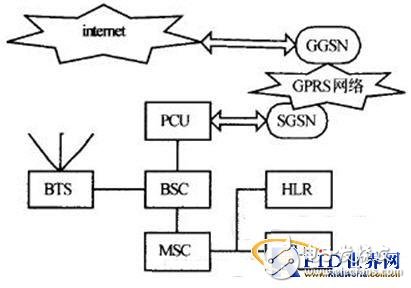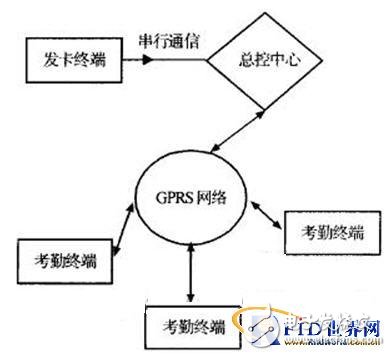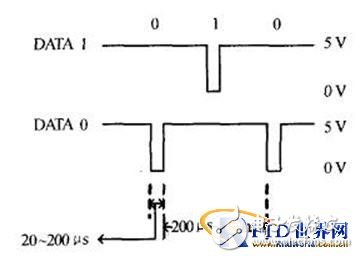Daqing Petroleum Pipeline Co., Ltd. is responsible for the maintenance of oil pipelines and the power part of providing oil transportation, so the oil pump workstations are distributed in the vast wilderness. Due to the difference in distance and work intensity, the accident is sudden and strong, and employees frequently work at various workstations. The attendance and post salary are very difficult to count. According to this actual situation, the total control mode of the total control center and the attendance terminals is adopted. Each employee uses the radio frequency IC card as the ID identification card, and the communication medium adopts the GPRS network, which is suitable for the actual situation of the pipeline company's workstations.
1 GPRS networkGPRS is implemented based on the existing GSM network. It is necessary to add some nodes in the existing GSM network, the gateway GPRS support node GGSN, and the service GPRS support node SGSN. The GGSN acts as a gateway between the GPRS network and the public data network, and can be connected to a variety of different data networks; the SGSN records the current location information of the mobile device and completes the mobile packet between the mobile device and various data networks. The sending and receiving of data provides two-way packet routing for all users in the service area. The GPRS network block diagram is shown in Figure 1.

Figure 1 GPRS network block diagram
This system uses GPRS network as the communication medium, because it has many advantages: the price is reasonable, the GPRS service provided by China Mobile Company can also adopt the form of monthly subscription, the price is low, the transmission rate is high, the real-time performance is good, the data volume Large, GPRS can provide transmission rate of up to 115 kbit/s; short access time, packet switching access time less than 1 s, based on IP protocol, can provide powerful Internet access; always online, high reliability, Strong anti-interference ability.
2 overall system designAccording to the actual needs, the following system workflow is determined: after the employee enters the company, the master control center software first controls the card issuer through the serial port, that is, the master control center software reads the RF card number of the Wiegand 26 bits protocol code and assigns an employee number. Then, it is sent to remote terminals distributed around the Internet through the Internet to store the RF IC card number and employee number of the employee. When the employee punches the card at each terminal, the terminal records the time of punching and the number of the employee. The timing of each terminal is timed by the GPRS module. The employee login status and terminal number in the segment are sent to the general control center on the Internet. The general control center stores the login status according to the employee number, and assigns different salary weights according to the different login terminals, so as to manage the salary and attendance. . The system structure is shown in Figure 2.

Figure 2 System diagram
3 hardware terminal compositionAccording to the needs of the system, the communication of each terminal based on the GPRS network is a difficult point in the design of the system hardware terminal. In this paper, the GPRS module SIM300-3j produced by SIMCOM is used as the wireless communication part. Its price is lower than that of similar modules. Its powerful function, embedded standard TCP/IP protocol, so that the control MCU does not need to involve complex TCP/IP protocol stack. Write; provide a standard asynchronous serial port with 1TrL level, so that the communication between the MCU and the module is simple serial communication. Due to the TTL level, no special level conversion chip is required in the hardware design, and only a three-wire system is used for simple connection, which can realize reliable communication; rich peripheral resources, including A/D, SPI, audio, microphone interface, etc. Universal, simple, and easy to use AT commands cover all GPRS functions and improve development speed. However, in the peripheral circuit design of 300, special attention should be paid to the following points.
Power supply part: Since 300 uses 3.4 to 4.5 V power supply, the module is automatically turned off when it is lower than 3. 4 V, and the power consumed is large when performing TCP/IP transmission, so the power supply must be able to provide 2A. Peak current. This requires a small voltage drop in the power module to provide 2 A, and it is important to note that the rest of the system is powered by 5 V. Therefore, the input voltage and output voltage difference of the voltage regulator chip should be less than 1 V, so that the system can be powered by one power supply to reduce interference. By comparison, choose MICREL's adjustable voltage regulator chip MIC29302bu. This chip provides 3 A output capability, and the full load voltage drop is only 350mv. It can work as long as the IV voltage difference is met between input and output. Meet the needs of the system.
In order to prevent electrostatic damage to the 300 module, a transient voltage suppression diode is placed near the pins of the SIM holder, and a 20 Q resistor is connected in series on each signal line. Play a match.
The most critical part of the SIM300 is the selection of antennas and RF patch cords. The RF connection line should consider the loss of the RF signal, so the smaller the better. According to field measurements, the insertion loss of the RF link can be used less than 1 dB in the GSM900 communication network. The impedance of the antenna is 50 Q, and the VSWR is less than 2. According to the above requirements, Japan's Murata's MM9329-2700B RF frequency adapter and universal rod antenna are used. The liquid crystal display module, real-time clock module, EPROM storage module and serial communication module are all common modules of an attendance system, and the chips used are marked in the figure. The card reader module uses a standard Wiegand26bits read-only reader, and the card reader outputs Wiegand26bits encoded data, as shown in Figure 3.

Figure 3 data signal waveform
Embedded Pc,Fanless Embedded Industrial Pc,Fanless Embedded Industrial Computer,Fanless Embedded Computer
Shenzhen Innovative Cloud Computer Co., Ltd , https://www.xcypc.com